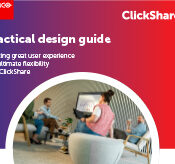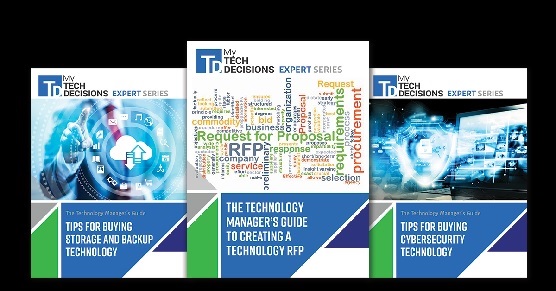Look in a conference room today at almost any company, and what do you see? Not the pretty pictures in brochures with beautiful clean tables and happy people pointing at pie charts. No, it’s usually one or two table-top mics and maybe a sound bar. Perhaps a USB camera stuck on top of a monitor. Cables abound: USB alongside HDMI and even analog audio. Maybe there’s a dedicated computer, maybe there’s not.
And how do employees use these conference rooms? That depends. They may try to use the dedicated computer, only to find that something isn’t connected because of a previous meeting.
Or they may be frustrated that the dedicated computer cannot access the files they wish to share. They may try to connect the USB mics, speakers and camera to their own laptops (Bring Your Own Device, or BYOD) with varying degrees of success.
Or they may just give up and use the built-in microphone and camera on their own computer to save time and make progress.
Even if they manage to connect to some USB devices, they are often suboptimal due to poor placement and performance, leading to excess background noise and poor echo cancellation.
As more people attempt to join a conference in a room, these conferencing problems multiply in severity, with members unable to hear or be heard clearly.
This is not a productive arrangement. It leaves equipment unused – or poorly used – and leaves employees feeling frustrated and ineffective.
It also leaves the IT department out of the equation until the situation is dire, because they have no visibility into all of these non-networked peripherals and connections.
How would a better system look?
What makes conferencing better?
As we start to think about how to untangle conferencing issues, a few key attributes are clear from the examples above.
1. The system should be manageable by IT.
There is nothing more frustrating for IT professionals than to be called in to repair conferencing problems that are out of their control, over and over. Non-networked conferencing components such as USB and HDMI devices are invisible to the IT department until someone calls from a conference room with a problem to fix, resulting in wasted time and resources. A better solution should be completely visible and manageable to IT via the network.
2. The system should do a better job of supporting BYOD.
The fact that users often bring their own laptops or mobile devices shouldn’t cause headaches for conference attendees or IT departments. A better solution allows users to make simple, pre-configured connections to to conference room system without exposing the network to undue risk.
3. The system should support high quality microphones.
The use of a single table-top microphone in conference rooms is barely a step up from laptop microphones, often offering mediocre sound quality and far too much pickup of room noises. A better solution allows for the deployment of multi-channel and beam-forming microphones, usually ceiling mounted, that can adjust their directionality to focus on individual people, thereby eliminating noise and vastly increasing intelligibility.
4. The system should allow microphones to be placed where they make sense.
Whether using ceiling or table-top microphones, cable length restrictions shouldn’t impede proper placement near attendees. Too often people crowd around a microphone that is stuck at one end of a table in order to be heard. A better solution allows for the easy deployment of multiple microphones as needed, placed where they can provide the greatest benefit, unimpeded by cable length.
5. The system should allow loudspeakers to be placed where they make sense.
With all the talk about microphones, loudspeakers are too often forgotten but they are equally important. A system that places a single loudspeaker at one end of a room cannot hope to address everyone in the room without high volume levels and even feedback. A better solution allows multiple loudspeakers to be placed around the conference room for maximum intelligibility at manageable volumes, unrestrained by cable type or length.
6. The system needs a consistent, always-connected DSP to manage sound quality.
The use of DSPs for conferencing isn’t new, but ad hoc USB-based devices often don’t allow for the use of high-quality, external DSPs, relying instead upon whatever the communications software provides. A better solution allows for the use of always-connected DSPs, located in the conference room or elsewhere on premises.
My TechDecisions Podcast Episode 91: Navigating the Sea of Videoconferencing Applications
Such a system means that users can walk in, connect one cable, and have everything “just work” the same way, every time.
How to get there
The first step is to establish a foundation that provides both necessary functionality for users and means for accountability for IT. These two groups intersect at the network they share, which points us directly to AV-over-IP as the best starting point.
Conferencing systems based upon AV-over-IP are automatically part of the network overseen by IT.
Toolsets allow IT to easily see all devices in all rooms, giving them the ability to spot conferencing problems before attendees notice, and to easily secure the system from unwanted changes. Time and effort can be saved by eliminating constant visits by technicians to malfunctioning conference spaces and instead using modern monitoring tools.
AV-over-IP systems can easily accommodate BYOD systems safely with efficient bridging adapters.
A simple USB device can connect any user device to preconfigured audio routes for a perfect setup every time, no matter who is connecting. These adapters also serve to isolate guest devices from the network itself for increased security.
Too many USB-based solutions assume only one or two channels of audio, but AV-over-IP can handle many channels per device with ease.
This allows for the support of multi-channel microphone arrays connected to multichannel DSPs for truly stellar performance and intelligibility. Because networks don’t have the distance limitations of USB or analog, your DSPs can be located anywhere on the network.
A single, powerful DSP can handle several rooms, and network DSPs may even be implemented as software running on standard computers as well.
As mentioned above, Ethernet networks don’t have the same severe distance limitations of USB or HDMI.
This means that AV-over-IP systems can place devices wherever they work best, which means ideally placed microphones and loudspeakers in rooms for maximum effectiveness with no extenders or compromises.
AV-over-IP can help solve common conferencing problems today with thousands of available products to suit nearly any space, from huddle rooms to giant auditoriums.
If you enjoyed this article and want to receive more valuable industry content like this, click here to sign up for our digital newsletters!











Leave a Reply